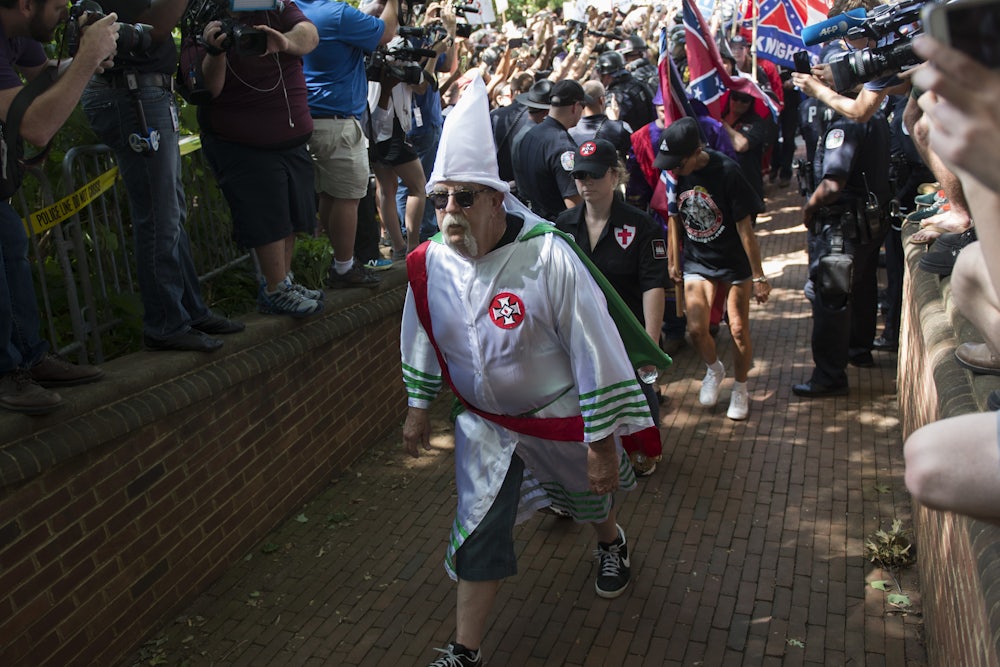California Gubernatorial Candidate Steered Low-Income Housing Funds To Campaign Contributors
California Treasurer John Chiang's conflicts of interest are not the first in the program's long and sordid history.
 hEnDeRsOn, kY/Wikimedia CommonsThe federal government's Low Income Housing Tax Credit (LIHTC) program is supposedly "the most important resource for creating affordable housing in the United States today." But since its creation in 1986, the $8 billion program has been plagued by scandals and other problems.
hEnDeRsOn, kY/Wikimedia CommonsThe federal government's Low Income Housing Tax Credit (LIHTC) program is supposedly "the most important resource for creating affordable housing in the United States today." But since its creation in 1986, the $8 billion program has been plagued by scandals and other problems.
The latest involves California treasurer and 2018 gubernatorial candidate John Chiang, who has helped funnel millions in LIHTC tax credits to developers who have given him some $100,000 in campaign donations.
The Sacramento Bee reports that Chiang, through his role on various committees charged with dispensing LIHTC money, was able to steer $60 million in federal tax credits to the developer Pacific West Communities, which has since donated $37,000 to his various campaign committees.
Another developer, Domus, has gotten Chiang's signoff on tax credits for three separate projects since 2013. The company has donated $40,000 to Chiang over the same period.
The problem, say LIHTC's critics, is that there is little accountability for how the program's credits get handed out.
"Really, there is no federal oversight of the process," says Daniel Diaz-Garcia of the Government Accountability Office (GAO), which has now published three reports on LIHTC.
In theory, the Internal Revenue Service provides oversight for LIHTC. But the agency isn't very well-suited to oversee such a complex program. "The IRS is a tax collection agency," says Diaz-Garcia. "It's not involved in housing policy. It's not involved in administering programs on the part of the federal government."
Each year, the IRS gives each state a pool of LIHTC dollars. (The amount each state gets is based on its population.) The states then—through what are known as Housing Finance Authorities, or HFAs—award these tax credits to developers of affordable housing projects. Those companies then sell the tax credits to investors in their developments.
Throughout the program's 30-year history, according to those GAO reports, the IRS has audited only seven of the now 58 HFAs.
In California, the tax credits are awarded by the California Tax Credit Allocation Committee (CTCAC). As treasurer, Chiang is one of three voting members of CTCAC, which gives him enormous influence over where the state's $94.9 million in federal LIHTC money goes.
Potential conflicts of interest—or in Chiang's case, actual conflicts of interest—in awarding the tax credits highlight the need for internal safeguards and regular reviews of the program. But thanks to the IRS's "minimal" oversight, the GAO has found that the agency "cannot determine the extent of noncompliance and other issues at HFAs."
This is not the only high-profile scandal related to the program. In Florida, developers fraudulently inflated construction costs in order to squeeze some $34 million out of 14 separate LIHTC-funded projects. The head of Florida's HFA—who was supposed to be monitoring these projects for this kind of fraud—resigned in 2016 after an audit found he had spent $50,000 on a single steak and lobster dinner for those same affordable housing lenders he was supposed to be monitoring.
Another problem with LIHTC is its system of "boosts." Not only can developers reclaim up to 70 percent of a project's initial costs through tax credits, but states can also give out a "boost" of extra tax credits should a developer demonstrate this is necessary to make their project financially viable. A 2016 GAO report found that states often failed to determine those additional credits' financial necessity before doling them out.
Virginia awarded boosts to all LIHTC projects that received certain green building certifications, including in one case a developer who didn't even ask for the bonus credits. Arizona just gives the boosts to all LIHTC projects, no questions asked.
All this has led to a situation where LIHTC recipients are spending more money on a decreasing number of projects. A recent investigation by NPR and Frontline found that 70,220 units were constructed with LIHTC funds in 1998 at the cost of $4.1 billion in tax credits. In 2014, LIHTC handed out $6.8 billion to build just 58,735 units.
California's data show a similar trend at the state level, with the tax credit allocations per unit (including state tax credits) rising from $195,764 in 2010 to $219,946 in 2016.
These mounting costs and diminishing returns are a natural consequence of the program's complex design, says Vanessa Brown Calder, an urban policy analyst with the Cato Institute.
"You lose a lot of value along the way from the IRS to the developer to the tenant," Calder tells Reason. Academic research has found that only about 35 percent of the value of the credits provided to developers shows up as rent savings for tenants.
Calder says the only real way to increase affordable housing is to reform the state and local zoning regulations that drive up the costs of home construction (and, as a result, raise rents). "All these federal subsidies coming in are just band-aid solutions," she comments. "They're just kind of like the federal government chasing its tail."
At $8 billion a year, LIHTC is a pretty expensive band-aid.
 Photos: Rita Crundwell and the Dixon embezzlement
Photos: Rita Crundwell and the Dixon embezzlement











